|
About Alpacas>General |
Alpacas (Vicugna Pacos) are South American Camelids (Camelidae Artiodactyla) and are distantly related to African camels. Even-toed ungulates, they are indigenous to the altiplano of Chile, Peru and Bolivia. Other South American Camelids include llama, guanaco and vicuña which, together with the alpaca, are known collectively as ‘lamoids’.
Like other lamoids, alpacas are hardy: well adapted to the hash conditions of the Andes. Gregarious animals they have evolved strong social herd instincts, and their highly developed protective nature makes them very effective guards against predators, protecting not only their own young but other livestock such as sheep flocks. Lamoids are cloven-hoofed and their sharp toenails can be employed as deadly weapons against attackers. Only the vicuna beats the alpaca for fleece quality but vicuna are difficult to breed and shear, produce only a tiny fleece, and can be aggressive, in any case many breeders believe that selective breeding is close to placing the alpaca in first place for quality. Llamas are larger and stronger than alpacas but their fleece is inferior. Llamas are often used as pack animals or as flock guardians.
Distinguishing between alpacas and llamas is pretty easy. Llamas are larger and their fleece is bushy and quite hair-like. They have longer and more pointed noses but the easiest way of telling the two apart is by looking at the ears. Alpaca ears are spear-shaped whilst the llama’s have a distinct banana-like curve and the tips point towards each other. Llamas tend to hold their tails erect, alpaca tails are held close to the body unless the alpaca is aroused.
Alpacas are intelligent and have good memories, they are easy to handle and herd and get along well with other livestock providing they are not threatened. A slightly less appealing trait the alpaca shares with all camelids is a propulsive primary stomach-in other words: they spit! Spitting is not generally a big problem as it is mostly restricted to other members of the herd: humans generally only suffer if they get caught in the cross fire.
|
|
|
| Lamoids |
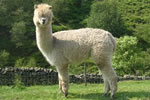 |
| Alpaca |
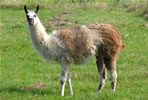 |
| Llama |
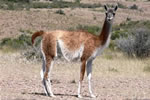 |
| Guanaco |
 |
| Vicugna |
|
|
| |
|
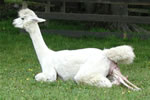 |
| Alpaca Birth |
|
|
|
Life expectancy of an alpaca is about 20 years and in that time a female might expect to give birth to 14 or 15 young. Gestation takes around 11.5 months (335 days) and usually results in a single birth (multiple births are rare and frequently result in morbidity) during daylight hours, most frequently in the morning. The young are weaned at around six months and the females will have reached breeding maturity by 18 months, males take a little longer but should be working by the time they are three years old. Alpacas grow to about 1m (3ft) at the withers (shoulders) and, 1.5m (5ft) at the head with a body length of about 1.5m (5ft.). Birthweights range between 5 and 10 kg, and mature alpacas weigh between 50 and 80 kg (110 - 175 lbs). |
|
| |
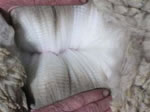 |
|
Alpacas are highly valued for their luxurious fleece which comes in over 20 natural colours including white, fawns and browns, greys, and black. Shearing is generally accomplished once a year though some spinners prefer a two-year fleece due to its long staple. The process of shearing is similar to that for sheep though the alpaca is usually restrained throughout. It is rare for an adult fleece to weigh less than 2 kg and a good alpaca will produce in excess of 5 kg each year. |
|
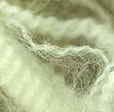 |
|
In the UK alpacas are generally referred to as ‘males’ and ‘females’, and ‘cria’ (pronounced “cree-ya”) for pre-weaned young. You will sometimes hear the terms ‘macho’ for a mature male and ‘hembra’ for a mature female, ‘tuis’ are adolescents. These terms are used predominantly in the Americas.
|
|